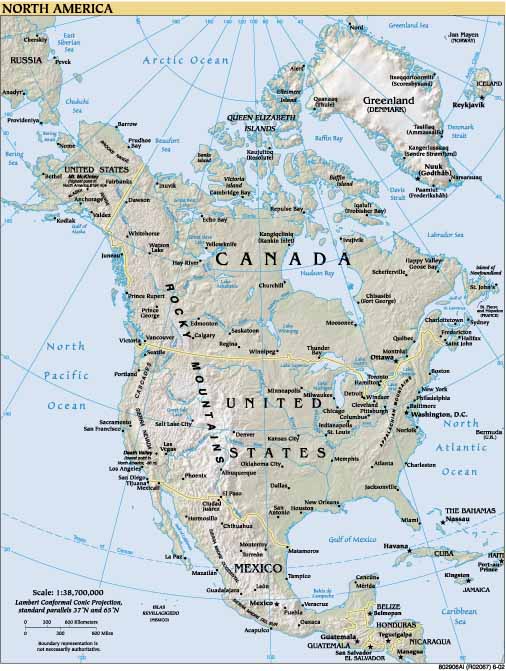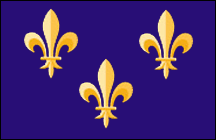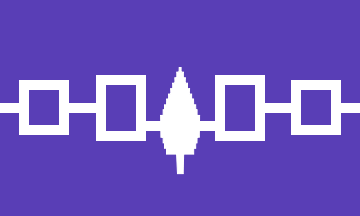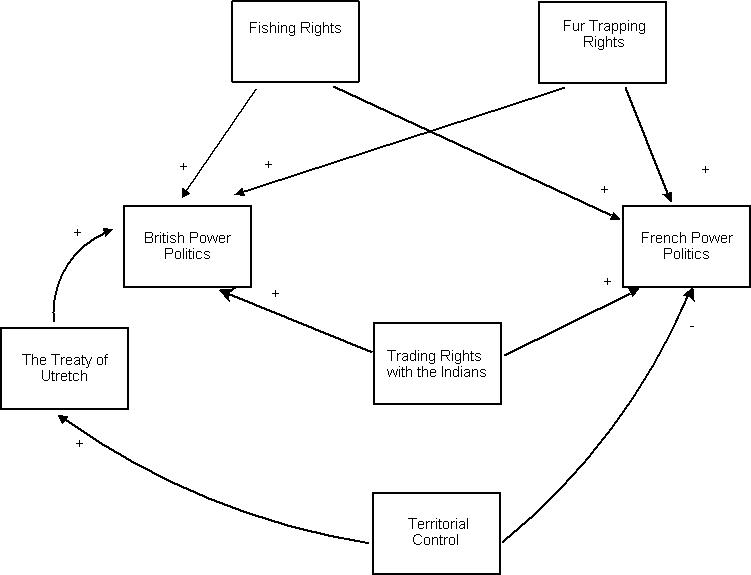| ICE Case Studies
|
By: Katelyn C. Keegan |
I.
Case Background |
![]()
 I. CASE BACKGROUND
I. CASE BACKGROUND
Shortly before the American colonists fought the war of independence against the British, they fought side by side with them against the French and Indians. Settlers had arrived in the New World hoping to find gold and other riches as early as the 1600s. Upon arriving, they did not find such riches; however, they found a land full of natural resources. The French settled in the Hudson Bay area in modern day Canada. Here they established many outposts to trade furs with the natives as well as to send back to Europe. British settlers arrived around the same time, but settled much farther south in modern day Virginia. As both the French and British expanded into the unsettled areas, there arose issues regarding hunting, trapping, and trading rights, as well as land disputes. Tensions grew to a boiling point in 1753 as France and British declared war against each other for the region. As a result, France was forced to give up its land claims and Britain gained control of what is modern day Ohio and the heartland.
2. DescriptionIn the late 1600s and the early 1700s, the Iroquois Indians found themselves attempting to create a relationship with the British for the first time, after Britain had obtained much of the East Coast from the Dutch. Unfortunately, the British were not nearly as hospitable to the Indians as the Dutch had been and the Indians lost nearly a third of their population in a short time frame following the arrival. Recognizing the challenges that would be faced, the Iroquois Indians set up the Grand Settlement Treaty in 1701. [1] |
The start of the French and Indian War[a] |
In 1713, Spain signed the Treaty of Utretch with Britain following the War of Spanish Succession (or Queen Anne's War as it is known in Britain). France which had allied with Spain during the war also found itself on the losing side of the treaty. The treaty laid out the following conditions, Britain gained several islands in the Caribbean and trading rights in Spanish America. But more importantly were the concessions that had to be made in the Northern regions. France was forced to “[recognize] the British claim to the Hudson Bay territory, and ceded mainland Acadia (modern Nova Scotia and New Brunswick) to Britain, but not Cape Breton” and Isle Saint-Jean (modern day Prince Edward's Island). [3] The recognition of this area as British territory did not stop French fisherman from continuing to fish in the waters off of the island. The area known as Acadia was important as this was were much of the trading with the Indians was occurring in New France.
Much of the concessions in North America did not concern the Spanish as
much as they did the French as there were few Spanish settlers in the Ohio
Valley
Region. The concessions however for the most part lead to the tension to the
French and British in North America that lead to the French and Indian War.
Fur trapping, trading, fishing off the coastal islands in Acadia and land disputes
over areas under the Grand Settlement were the powder keg. However the spark
that set off the war was a memo dated 31 October 1753 from British Governor
of Virgina Robert Dinwiddie ordering the French out of the British territory.
[4] Governor Dinwiddie had been acting on behalf of all the British
colonies with the blessings of most of them since the colonies saw their own
rights in hunting, trapping and trading in the area just over the Appalachian
mountains. See below for a time line of the events that followed.
Date |
Major Event [5] |
Location |
Number of British Casualties*
[6] |
Number of French Casualities* [7] |
| 10/31/1753 | George Washington leaves Williamsburg, VA with a letter from VA Governor Dinwiddie to order the French out of British Territory | Williamsburg, VA | -- | -- |
| 12/4/1753 | George Washington attempts to deliver the letter from Dinwiddie to the French and is told to go farther North | Franklin, PA | -- | -- |
| 12/27/1753 | George Washington is attacked by Indians and escapes, although injured | Murderingtown |
-- | -- |
| 4/18/1754 | British Fort Prince George is surrendered to the French | Pittsburgh, PA | -- | -- |
| 7/3/1754 | Washington is attacked by the French at Fort Necessity | Farmington, PA |
31 | 3 |
| 7/9/1755 | British troops move in on Fort Duquesne. Britain loses | Pittsburgh, PA | >1,000 | 0 |
| 5/17/1756 | Britain officially declares war on France | London, Britian | -- | -- |
| 7/1756 | British Fort Granville is destroyed | Lewistown, PA | >250 | 0 |
| 8/14/1756 | French capture British Fort Oswego, claiming control of Lake Ontario | Oswego, NY | 100 |
30 |
| 8/10/1757 | The French capture Fort William Henry and due to a misunderstanding Indians on the French side scalp most of the British | Lake George, NY | 70-180 | 0 |
| 7/8/1758 | British troops fail to capture Fort Ticonderoga | Ticonderoga, NY | few dozen | few dozen |
| 7/26/1758 | Britain captures a Fort on the St. Lawrence River opening water ways into Canada for British forces | Louisbourg, Nova Scotia | 195 | 400 |
| 8/27/1758 | Britain captures French Fort Frontenac, cutting off French supply lines to the West | Kingston, Ontario | 0 | 25 |
| 10/8/1758 | Britain signs the Treaty of Easton with the Indians. Indians promise not to fight with the French, if Britain will not settle west of the Allegheny Mountains following the war. | Easton, PA | -- | -- |
| 10/12/1758 | French troops attempt to attack Fort Ligonier, but fail. | Ligonier, PA | 6 | 100 |
| 7/1759 | Britain with the help of the Indians defeat the French troops at Fort Niagara. | Youngstown, NY | unknown | 150 |
| 7/1759 | Britain is also able to capture Fort Ticonderoga, and Crown Point | Upstate NY | 45 | 100 |
| 9/13/1759 | France surrenders the city of Quebec | Quebec City, QC | -- | -- |
| 9/8/1760 | Britain captures Montreal. Thus ending the French and Indian War in North American, but it continues to be waged in much of Europe | Montreal, QC | -- | -- |
* See note in Section 11: Fatality Level of Dispute (military and civilian fatalities) regarding numbers of fatalities
"The French Era" (1634 - 1763): North America prior to the start of the French and Indian War[b] |
"The British Era" (1763 - 1775): North America during and following the French and Indian War[c] |
Today - North America is made of three countries Canada, Mexico, and the United States

 |
 |
 |
||
The Flag of New France |
The Flag of the Iroquois Confederation |
The Flag of Britain |
![]()
 II. Environment Aspects
II. Environment Aspects
The biggest issues of the French and Indian War were related to land and land based resources disputes. As always owning land, especially during the colonial period of Europe, shows that a country was not only wealthy but also had a strong militia. In addition to the land disputes, the issue of fur and trading rights was vital and central to the conflict. French and British settlers lived in relative harmony in North America until French settlers moved farther south to hunt new types of furs and to avoid over hunting in an area.
Defining type of habitat is difficult to define as it is both cool and temperate depending on which of the battles or situations is being discussed. Much of the area that was held early on by the French was located in modern day Nova Scotia, Ontario and Quebec. These areas although they experience moderate changes in temperature, generally remain cool year round. This cool temperature is a prime location to hunt and trap furs and pelts as animals retain a large portion of their coats even in summer months. Farther south into modern day United States, especially in the areas of Pennsylvania, Ohio and into Northern Kentucky, temperate climate offered new species of animal pelts or furs, such as red and brown fox, and badgers, or new colors as seasons change more dramatically then in the northern region.
The actions of the British and French in North America, especially in regards to hunting, trapping and fishing, disturbed the way of life for many Native Americans. The long term over hunting in this areas could lead to the devastation of the native ecosystem. Upon winning the war, Britain farther impacted French life by forcing them out of Quebec and Canada.Following specifically the Battle of Fort Louisbourg, British Generals forced more than 5,000 French civilians to move back to France. Many others managed to escape to the area that would later be acquired as part of the Louisiana Purchase or hide in the Northern regions of Quebec. These early French settlers in the Louisiana Purchase settled mainly in modern day Louisiana and are the ancestries of the Creoles in the region.
![]()
 III. Conflict Aspects
III. Conflict Aspects
The French and Indian War was an off-shoot of a series of wars in Europe between Britain, France and Spain following the death of the Holy Roman Emperor. Eventually, the war spread to North America and then onto India, West Indies, and the rest of Europe. The French and Indian War has several names including “The War of British Conquest,” and the “Seven Year War.” Today, the “War of British Conquest” is the preferred name for the conflict in much of Canada, especially in French-speaking areas of Canada, namely Quebec. There continues to be some level of animosity between the Quebecois (French speaking Canadians) and the English (and English speaking Canadians) as a result of this war. Many in Quebec point to this war and the British victory as the moment in which there was a shift in the regional culture. The regional culture was forced to change from a nearly strictly French society into a mixture of British and French, despite most of the French being exiled and deported. This war is one of the moments that is referred to in the Quebec motto “je me souviens,” which translates as “I remember.”
|
The Death of General James Wolfe [d] |
Due to poor record keeping at the time, there is a large amount of disagreement on the exact numbers. Estimates range from 3,000 to 15,000 military and civilian death (which are not seperated out). See above time line for a very rough breakdown of the number of soldiers lost at each battle.
![]()
 IV. Environment
and Conflict Overlap
IV. Environment
and Conflict Overlap
The French and Indian War was the result of both a DIRECT and INDIRECT environmental conflict. The direct issue was the desire of both the French and British to limit the others access to fur trapping and thus trading with the native Indians who lived in the region. The indirect issue was the result of trapping by both the French and British in general, which limited the amount available to the Indians for their own purposes such as culture, food, and clothing.

The causal diagram above focuses on the cause of the war. While land rights are an important factor to the start of the war, it is not the main problem that led to the outbreak. France and Britain had long been involved in a struggle for the balance of power as was evident from the fighting already occurring in Europe and Asia between them and their colonies. Power, according to various international scholars, was and is defined by the amount of land and resources a nation held, because of this, both France and Britain saw the new world as important way to overthrow the other. Power is a zero sum gain problem, when one country earns more, another must lose some.
The level of strategic interest was ultimately MULTILATERAL despite the French and Indian War fighting being contained to a small region in North-Eastern North America. Global fits this area well since the French and Indian War was just a subset of a global war between British colonies and French colonies (spearheaded by the respected motherlands). The focus of the war was a balance of power to declare dominance over the other, indicating a true world power existed.
The war however does fit several other categories of strategic interest including regional, state and substate. Regionally, there was a dispute between British and French colonists over rights to trading and trapping. There was no agreement about the limitations of land boundaries, leading to trespassing on the others land. It was a state issue, since British colonists were supposed to be prohibited from going across the Appalachian Mountains by a British law passed in the early 1600s. It was a substate issue because of the role that the Native Indians played in the war. They fought on both sides hoping to secure their own freedom and to protect their lands.
The French and Indian War was a VICTORY from the British point of view. The war ended in 1763 with the signing of the Treaty of Paris. Through the treaty Britain gained control of most of the land East of the Mississippi River, leaving the French and Indians to have the land west of the river. However as a direct result of the French and Indian War, Britain was left with a huge deficit which they passed on to the colonist… which would eventually lead to the phrase “Taxation without Representation” and the American Revolution.
![]()
 V. Related Information and Sources
V. Related Information and Sources
Buffalo (#47) The Buffalo Harvest - The importance of native buffalos to Indians in the Mid-West
Canfish (#62) Canada and Spain Fishing Dispute - Fishing rights of the coast of Nova Scotia
Diego (#120) U.S. Military Presence in Diego Garcia: National Interests vs. Human Rights
Hawaii-Bombs (#84) Kaho'olawe - The impact of military bombing on the Hawaiian Island of Kaho’olawe
Peten (#15) Guatemala-Maya Civil War - The results of the Guatemala-Maya Civil War
Print:
Cave, Alfred A. The French and Indian War. Greenwood Press. Westport, CT: 2004.
Fowler, William M. The French and Indian War and the Struggle for North
America. Walker & Company. New York: 2005.
Nester, William R. The Great Frontier War: Britain, France, and the Imperial
Struggle for North America. Praegar Publishers. Westport, CT: 2005.
Internet:
HistoryWorld. History of the French and Indian War.
http://www.historyworld.net/wrldhis/PlainTextHistories.asp?historyid=aa48/
10 August 2006.
Partners of the French and Indian War 250. The French and Indian War.
http://www.frenchandindianwar250.org/ 11 July 2006.
[1] [2] [4] Fred Anderson. The War that Made America. Penguin Publishing. New York: 2005.
[3] Newfoundland and Labrador Hertiage Partnership. "The Treaty of Utrecht." http://www.heritage.nf.ca/exploration/utrecht.html/
[5] PBS. The War that Made America. http://www.pbs.org/thewarthatmadeamerica/ 9 Jan 2006.
[6] [7] William Nester. The First Global War. Praeger Publishing. Connecticut: 2000.
[a] The National Park Service. The American Revolution. http://www.nps.gov/revwar/popups/1.html/
[b] [c] GEO-333 Geography of Michigan and the Great Lakes Region."The French and Indian War." Michigan State University. http://www.geo.msu.edu/geo333/frenchindian_war.html/
[d] America's Story from America's Library. "Western
Expansion & Reform." The Library of Congress. http://www.americaslibrary.gov/jb/reform/jb_reform_florida_2_e.html/
![]()